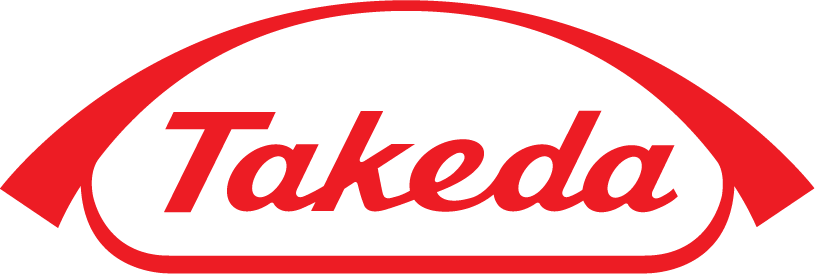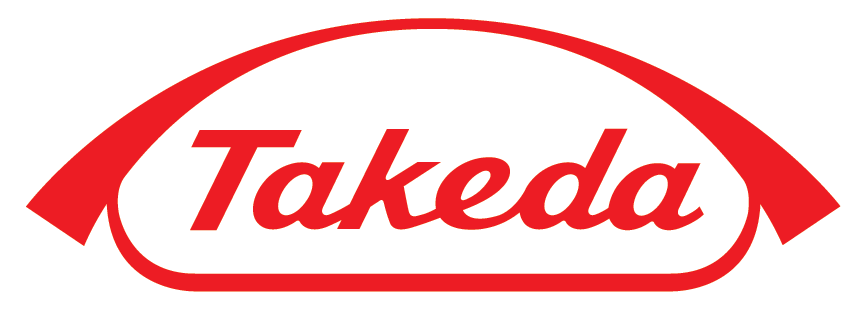


The 20% SCIG with the fastest infusions and fewest needlesticks*1
*Infusions took an average of <1 h (0.95 h; range, 0.2-6.4 h) and most (84.9%) used 1 to 2 needlesticks in the North American clinical study: a prospective, open-label, non-controlled, multi-center clinical study to determine the efficacy, safety, tolerability, and pharmacokinetics of CUVITRU in 77 patients ≥2 years of age with primary immunodeficiency (PI). The primary outcome measure was the annualized rate of actute serious bacterial infections (ASBIs), which was evaluated in 74 patients for a median treatment duration of 380.5 days (range, 30-629 days). Reference: 1. Cuvitru. Prescribing information. Baxalta US Inc; 2019.


The only once-a-month* SCIG that helps patients maximize time between infusions1
*Every 3 or 4 weeks.
Reference: 1. Hyqvia. Prescribing information. Baxalta US Inc; 2019.


The most utilized Ig
in the US over the last 15 years.1
(Based on aggregate analysis)
Reference: 1. Marketing Research Bureau. The plasma proteins market in the United States (based on aggregated data)–2005-2019.

Plasma Collection and Manufacturing
Plasma Collection and Manufacturing
Discover Takeda’s commitment to providing life-changing plasma-based therapeutics



Explore Takeda’s broadest range of Ig therapies and resources
Hover over the sections below to explore:
Please expand for Indication and Important Safety Information.
INDICATION, IMPORTANT SAFETY INFORMATION & BOXED WARNINGS
WARNING: THROMBOSIS for CUVITRU , HYQVIA , GAMMAGARD LIQUID , and GAMMAGARD S/D
- Thrombosis may occur with immune globulin (IG) products, including CUVITRU, HYQVIA, GAMMAGARD LIQUID, and GAMMAGARD S/D. Risk factors may include advanced age, prolonged immobilization, hypercoagulable conditions, history of venous or arterial thrombosis, use of estrogens, indwelling vascular catheters, hyperviscosity, and cardiovascular risk factors. Thrombosis may occur in the absence of known risk factors.
- For patients at risk of thrombosis, administer CUVITRU, HYQVIA, GAMMAGARD LIQUID, and GAMMAGARD S/D at the minimum dose and infusion rate practicable. Ensure adequate hydration in patients before administration.
- Monitor for signs and symptoms of thrombosis and assess blood viscosity in patients at risk of hyperviscosity.
WARNING: RENAL DYSFUNCTION and ACUTE RENAL FAILURE for GAMMAGARD LIQUID, and GAMMAGARD S/D
INDICATION, IMPORTANT SAFETY INFORMATION & BOXED WARNINGS
INDICATIONS AND LIMITATION OF USE
CUVITRU , GAMMAGARD LIQUID , and GAMMAGARD S/D are indicated as replacement therapy for primary humoral immunodeficiency (PI) in adult and pediatric patients ≥2 years.
HYQVIA is indicated for the treatment of primary immunodeficiency (PI) in adults. Safety and efficacy of chronic use of Recombinant Human Hyaluronidase in HYQVIA have not been established in conditions other than PI.
CUVITRU and HYQVIA are for subcutaneous use only.
GAMMAGARD LIQUID is for intravenous and subcutaneous use.
GAMMAGARD S/D is for intravenous use only.
IMPORTANT SAFETY INFORMATION
WARNING: THROMBOSIS
CUVITRU, HYQVIA, GAMMAGARD LIQUID, and GAMMAGARD S/D
- Thrombosis may occur with immune globulin (IG) products, including CUVITRU, HYQVIA, GAMMAGARD LIQUID, and GAMMAGARD S/D. Risk factors may include advanced age, prolonged immobilization, hypercoagulable conditions, history of venous or arterial thrombosis, use of estrogens, indwelling vascular catheters, hyperviscosity, and cardiovascular risk factors. Thrombosis may occur in the absence of known risk factors.
- For patients at risk of thrombosis, administer CUVITRU, HYQVIA, GAMMAGARD LIQUID, and GAMMAGARD S/D at the minimum dose and infusion rate practicable. Ensure adequate hydration in patients before administration.
- Monitor for signs and symptoms of thrombosis and assess blood viscosity in patients at risk of hyperviscosity.
WARNING: RENAL DYSFUNCTION and ACUTE RENAL FAILURE
GAMMAGARD LIQUID and GAMMAGARD S/D
- Renal dysfunction, acute renal failure, osmotic nephrosis, and death may occur in predisposed patients with immune globulin intravenous (IGIV) products, including GAMMAGARD LIQUID and GAMMAGARD S/D. Patients predisposed to renal dysfunction include those with any degree of pre-existing renal insufficiency, diabetes mellitus, age greater than 65, volume depletion, sepsis, paraproteinemia, or patients receiving known nephrotoxic drugs. Renal dysfunction and acute renal failure occur more commonly in patients receiving IGIV products containing sucrose. GAMMAGARD LIQUID and GAMMAGARD S/D do not contain sucrose.
Contraindications
- CUVITRU, HYQVIA, and GAMMAGARD LIQUID are contraindicated in patients with a history of anaphylactic or severe systemic hypersensitivity reactions to human IG, and IgA-deficient patients with antibodies to IgA and a history of hypersensitivity to human IG. Anaphylaxis has been reported with intravenous (IV) use of GAMMAGARD LIQUID.
- Additionally, HYQVIA is contraindicated in patients with known systemic hypersensitivity to hyaluronidase including Recombinant Human Hyaluronidase of HYQVIA, and known systemic hypersensitivity to human albumin (in the hyaluronidase solution).
- GAMMAGARD S/D is contraindicated in patients with a history of anaphylactic or severe systemic hypersensitivity reactions to the administration of GAMMAGARD S/D.
Warnings and Precautions
Hypersensitivity: Severe hypersensitivity reactions may occur, even in patients who have tolerated previous treatment with human IG. Severe hypersensitivity reactions and anaphylactic reactions with a fall in blood pressure have occurred in patients receiving GAMMAGARD S/D, including patients who tolerated previous treatments with GAMMAGARD S/D, even though it contains low levels of IgA. If a hypersensitivity reaction occurs, discontinue infusion immediately and institute appropriate treatment. IgA-deficient patients with antibodies to IgA are at greater risk of developing potentially severe hypersensitivity reactions, including anaphylaxis.
Renal Dysfunction/Failure: Acute renal dysfunction/failure, acute tubular necrosis, proximal tubular nephropathy, osmotic nephrosis, and death may occur with IV use of IG products, especially those containing sucrose. Acute renal failure has been reported in association with GAMMAGARD LIQUID and GAMMAGARD S/D. Ensure patients are not volume depleted prior to infusion. In patients at risk due to pre-existing renal insufficiency or predisposition to acute renal failure, assess renal function before initiation and throughout treatment, and consider lower, more frequent dosing. If renal function deteriorates, consider discontinuation.
Thrombosis: May occur following treatment with IG products and in the absence of known risk factors. In patients at risk, administer at the minimum dose and infusion rate practicable. Ensure adequate hydration before administration. Monitor for signs and symptoms of thrombosis and assess blood viscosity in patients at risk for hyperviscosity.
Aseptic Meningitis Syndrome: Has been reported with use of IG and may occur more frequently in females. Conduct a thorough neurological exam on patients exhibiting signs and symptoms, to rule out other causes of meningitis. Discontinuing IG treatment has resulted in remission within several days without sequelae.
Hemolysis: CUVITRU, HYQVIA, GAMMAGARD LIQUID, and GAMMAGARD S/D contain blood group antibodies, which may cause a positive direct antiglobulin reaction and hemolysis. Monitor patients for signs and symptoms of hemolysis and delayed hemolytic anemia and, if present, perform appropriate confirmatory lab testing.
Transfusion-Related Acute Lung Injury: Non-cardiogenic pulmonary edema may occur with IV administered IG. Monitor patients for pulmonary adverse reactions. If suspected, perform appropriate tests for presence of anti-neutrophil and anti-HLA antibodies in both product and patient serum. May be managed using oxygen therapy with adequate ventilatory support.
Transmittable Infectious Agents: Because CUVITRU, HYQVIA, GAMMAGARD LIQUID, and GAMMAGARD S/D are made from human plasma, they may carry a risk of transmitting infectious agents (e.g., viruses, other pathogens). No confirmed cases of viral transmission of variant Creutzfeldt-Jakob disease (vCJD) have been associated with CUVITRU or GAMMAGARD LIQUID, and no cases have been associated with HYQVIA.
Interference with Lab Tests: False positive serological test results and certain assay readings, with the potential for misleading interpretation, may occur as the result of passively transferred antibodies.
Additional Warnings and Precautions for HYQVIA
Immunogenicity of Recombinant Human Hyaluronidase (rHuPH20): Non-neutralizing antibodies to the Recombinant Human Hyaluronidase component can develop. The clinical significance of these antibodies or whether they interfere with fertilization in humans is unknown.
Spread of Localized Infection: Do not infuse HYQVIA into or around an infected area due to potential risk of spreading a localized infection.
Additional Warnings and Precautions for GAMMAGARD LIQUID and GAMMAGARD S/D
Hyperproteinemia, increased serum viscosity, and hyponatremia may occur. It is critical to distinguish true hyponatremia from a pseudohyponatremia because certain treatments may lead to volume depletion, a further increase in serum viscosity, and a predisposition to thromboembolic events.
Alterations in serum sodium levels (i.e., acute hypernatremia, pseudohyponatremia) may occur with GAMMAGARD S/D. In patients on a low sodium diet, calculate the amount of sodium from GAMMAGARD S/D when determining dietary sodium intake.
Adverse Reactions
CUVITRU
The most common adverse reactions observed in ≥5% of patients in clinical trials were local adverse reactions including mild or moderate pain, erythema, and pruritus, and systemic adverse reactions including headache, nausea, fatigue, diarrhea, and vomiting.
HYQVIA
The most common adverse reactions observed in >5% of patients in clinical trials were local adverse reactions including pain, erythema, edema, and pruritus, and systemic adverse reactions including headache, antibody formation against Recombinant Human Hyaluronidase (rHuPH20), fatigue, nausea, pyrexia, and vomiting.
GAMMAGARD LIQUID for PI
IV administration: The serious adverse reaction seen during IV clinical trials was aseptic meningitis. The most common adverse reactions observed in ≥5% of patients in clinical trials were headache, fatigue, pyrexia, nausea, chills, rigors, pain in extremity, diarrhea, migraine, dizziness, vomiting, cough, urticaria, asthma, pharyngolaryngeal pain, rash, arthralgia, myalgia, oedema peripheral, pruritus, and cardiac murmur.
Subcutaneous administration: The most common adverse reactions observed in ≥5% of patients in clinical trials were infusion site (local) event (rash, erythema, edema, hemorrhage, and irritation), headache, fatigue, heart rate increased, pyrexia, abdominal pain upper, nausea, vomiting, asthma, blood pressure systolic increased, diarrhea, ear pain, aphthous stomatitis, migraine, oropharyngeal pain, and pain in extremity.
GAMMAGARD S/D
The most common adverse reactions observed in ≥5% of clinical trial patients during or within 48 hours of infusion were headache, nausea, chills, fatigue, pyrexia, upper abdominal pain, diarrhea, back pain, infusion site pain, hyperhidrosis, and flushing.
The most serious adverse reactions reported postmarketing include renal failure, thrombotic events (myocardial infarction, cerebrovascular accidents, and pulmonary embolism), anaphylactic shock, aseptic meningitis, and hemolysis.
Drug Interactions
Passive transfer of antibodies may transiently interfere with the immune responses to live attenuated virus vaccines (e.g., measles, mumps, rubella, and varicella).








